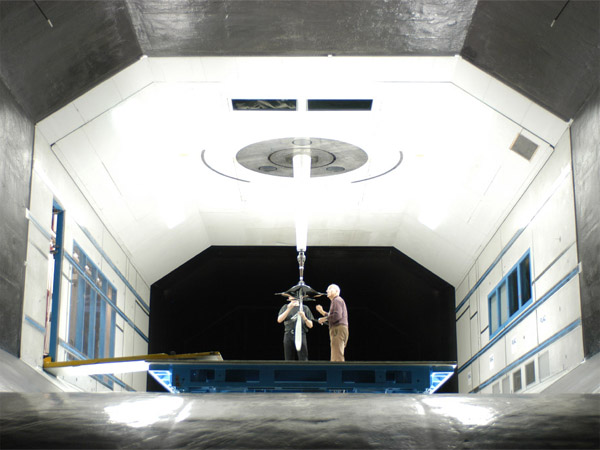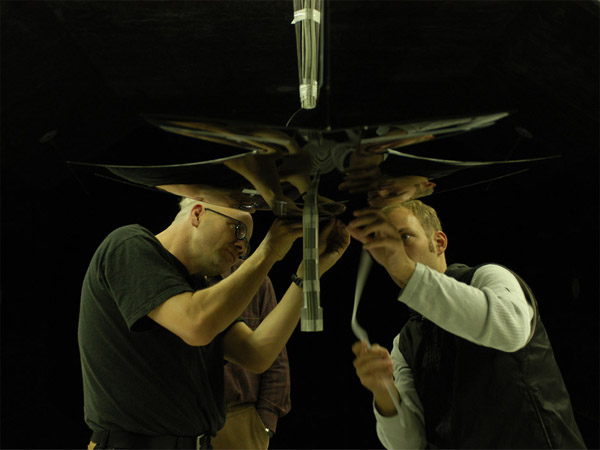October 2003
We completed this month a low-speed (Mach 0.2) wind tunnel test of SmartFish Design 10 at the RUAG AEROSPACE Wind Tunnel in Emmen.

he purpose of the test was to evaluate low-speed aerodynamics, substantiate stability and control, verify performance estimations and explore deep-stall characteristics.

The wind tunnel results were directly in line with expectations. The pre-test analysis and CFD (computational fluid dynamics) work paid off and the airplane appears to have excellent flying characteristics and also very good flight performances. In addition, overall stability and control of the airplane closely matched our empirical predictions.

Although we continually perform empirical and CFD analyses, wind-tunnel testing plays a critical role in the development of new aircraft. For a relatively low cost, wind tunnels provide precise measurements of the contribution of each aircraft component, as well as demonstrate the behaviour of the entire airframe.
